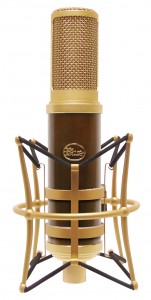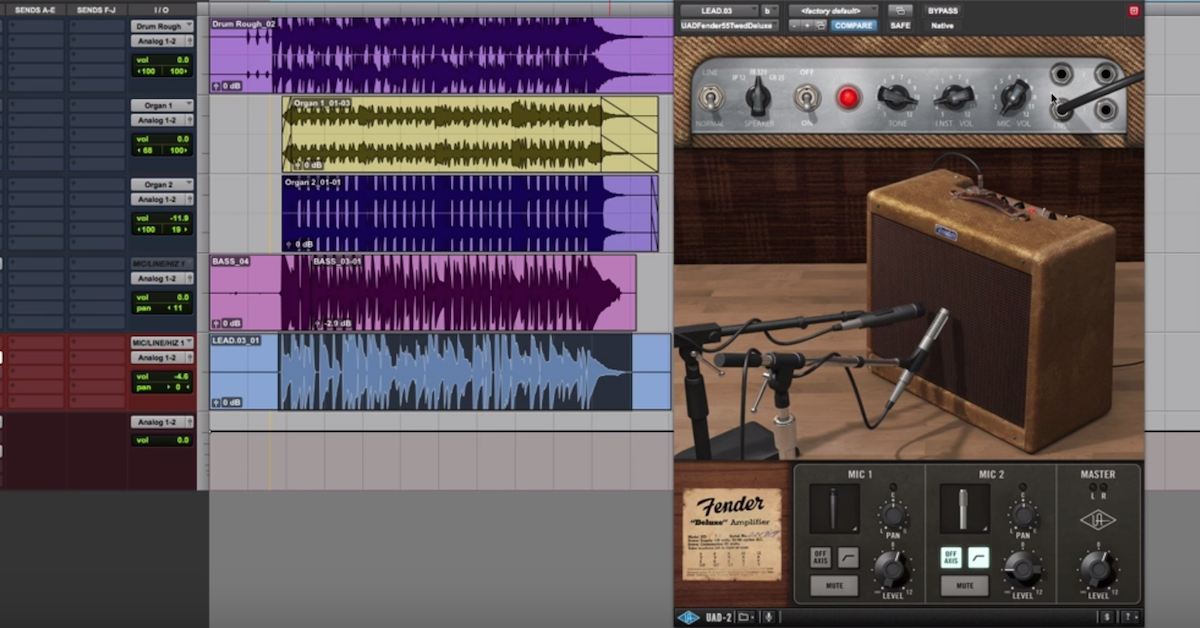Review: Blue Woodpecker Ribbon Microphone
Article Content
The Blue Woodpecker isn’t just another ribbon microphone. In fact, it was a microphone that almost never came to be…
When the Woodpecker was first presented to me by Skipper Wise himself (co-founder of BLUE) he said “I didn’t want to make a ribbon microphone, I don’t want to build a ‘me too’ product”. After nearly three years of rejecting every prototype until that point, finally a version was built both visually and sonically that he was ready to put his stamp of approval on–and that is what you see today.
Ribbon Microphones
Ribbon microphones are not new today – they’ve been around for many years. However ribbon microphones have made a huge comeback… well not that they’ve ever gone away, but they were typically used only in the most expensive studios. Today, you can get ribbon microphones for as low as $150, of course those really aren’t that good at all – but then again, those are the “me too” microphone designs. Although the street price is around $1000, the Woodpecker is as good as any ribbon microphone at any price point and is one of my personal favorites for nearly any instrument or vocal source.
Personal Experiences
 In my own personal studio the Woodpecker has become a “go-to” microphone for me in the places I least suspected it. One of those has been on acoustic guitar. Historically I’ve never liked to mike an acoustic guitar with a ribbon microphone. Even with my Royer’s (which I loooooove to death) I just can’t get the sound I want out of a ribbon on acoustic guitar. A client of mine told me of the sound he was getting on acoustic with his Woodpecker, so I tried it myself and I was quite amazed! Personally I like the flavor of a nice large diaphragm tube or solid-state condenser around the 12th fret of acoustic to color and warm it up, but the Woodpecker provides the natural tone you’d expect from a ribbon – but with a vintage flavor that I’ve not been able to capture from other microphones. The fact that it’s also active (can accept phantom power) means I don’t have to worry about the lowest of gain situations whether I’m using it in the studio or live and on location. The picture to the left was taken of a session in my own studio.
In my own personal studio the Woodpecker has become a “go-to” microphone for me in the places I least suspected it. One of those has been on acoustic guitar. Historically I’ve never liked to mike an acoustic guitar with a ribbon microphone. Even with my Royer’s (which I loooooove to death) I just can’t get the sound I want out of a ribbon on acoustic guitar. A client of mine told me of the sound he was getting on acoustic with his Woodpecker, so I tried it myself and I was quite amazed! Personally I like the flavor of a nice large diaphragm tube or solid-state condenser around the 12th fret of acoustic to color and warm it up, but the Woodpecker provides the natural tone you’d expect from a ribbon – but with a vintage flavor that I’ve not been able to capture from other microphones. The fact that it’s also active (can accept phantom power) means I don’t have to worry about the lowest of gain situations whether I’m using it in the studio or live and on location. The picture to the left was taken of a session in my own studio.
It’s hard to believe that the Woodpecker sells for only $995 when it just sounds so good, but for me what’s even harder to believe is that I can use the Blue Woodpecker as if it were a typical condenser microphone. When it gets down to it, ribbons and condensers are quite different in many ways. Ribbon microphones have their own flavor and character but ironically they disappeared for many years from the mainstream and have only recently made a comeback, but now are available to even the most hobbyist of home recordists. But make no mistake, the sub $200 ribbon microphones are exactly what you pay for.
The Problem with Cheap..
The problem with the “cheap” ribbons is that the membrane stretches too easily and the sound changes. This is especially apparent when you start to EQ your track and distortion or phase kicks in much easier than before. That’s a sign of a good ribbon mic and a bad one, but those who are not as experienced often don’t understand or even comprehend these differences. The fact is, if you have a good ribbon mic, you shouldn’t have to EQ if you find the right placement. This isn’t always the case with a condenser microphone, with the exception of the higher-end microphones. With the Woodpecker, I’ve only had to EQ my tracks that were recorded live due to the issues of live recording. But in the studio – I’ve only had to apply your typical high-pass filters, that’s about it. The top end is incredibly smooth and detailed, very open – while the mid-range has more of a “smiley-face” scoop to it that just works on darn near anything. Looking at the frequency chart below, the Woodpecker defines logic that you don’t need to EQ because its certainly NOT flat… yet it’s very natural sounding, ironically enough. Well, this has to do with how we WANT to hear things. The Woodpecker was purposely designed by Blue to place the microphone, walk away, hit record, and love it! And that’s why I personally use the Woodpecker myself (and heavily recommend it to my own clients).




